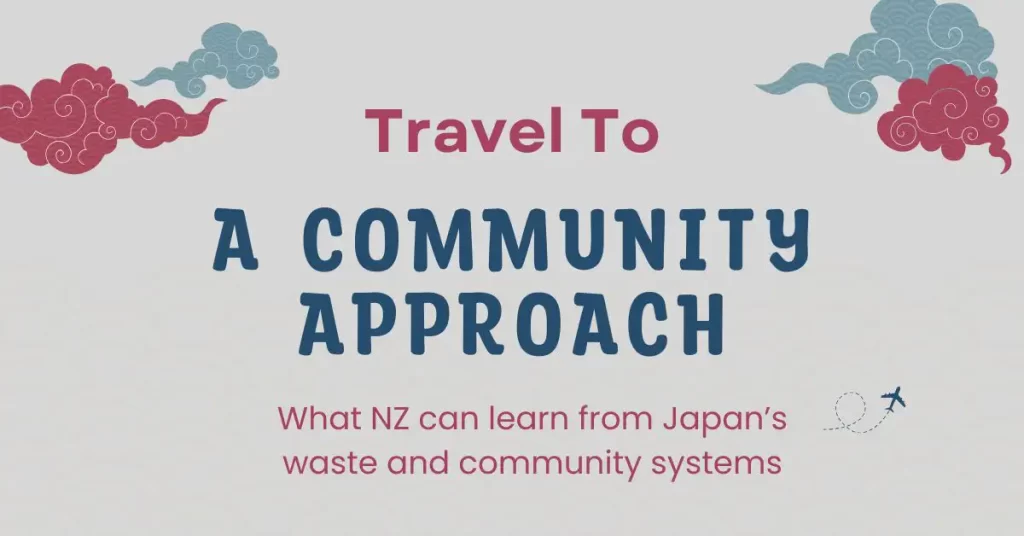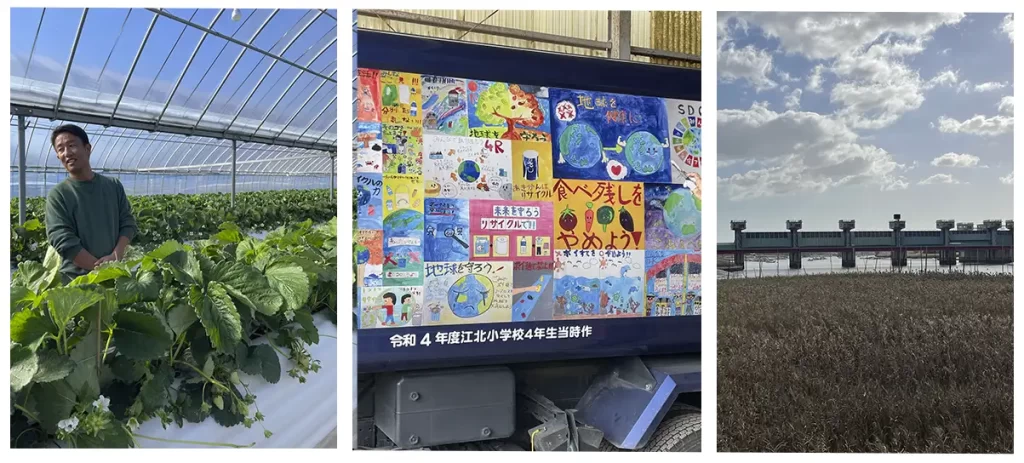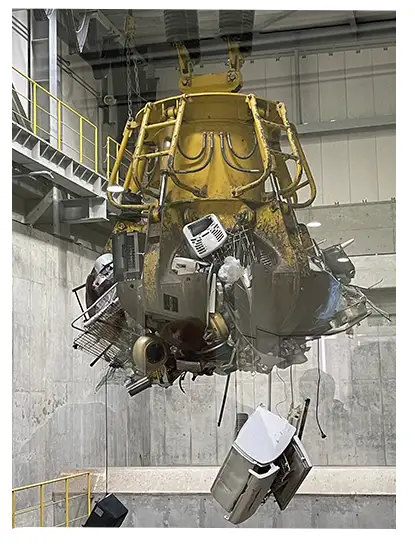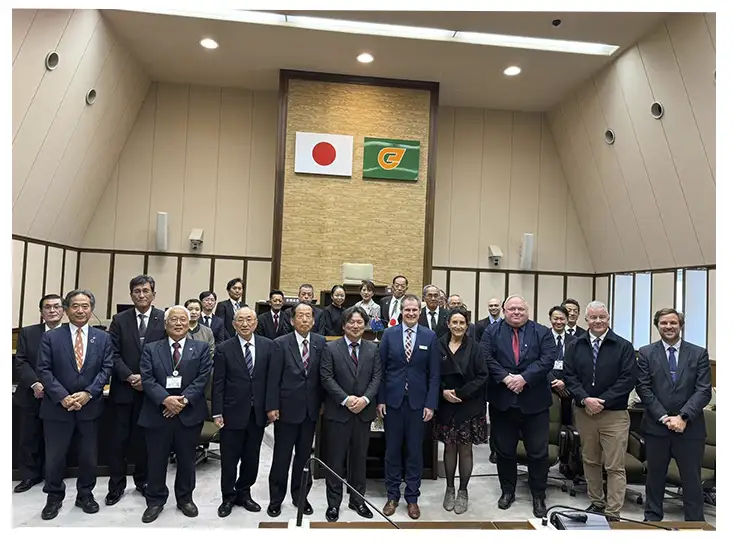
A Community Approach
A while ago I was very fortunate to be selected to travel to Japan, representing New
Zealand, at the Local Government Exchange and Cooperation Seminar, in Kōhoku, a town in Saga Prefecture, Kyushu, Japan.
Whilst there is much to write about … it was the collective responsibility felt by the citizens, working together for the betterment of all, which had the most profound effect on me.

Japan faces similar challenges to New Zealand; an ageing population, the threat of
natural disasters and an increase in social security costs. Couple these issues with their love for packaging and a high level of presentation of products and there ensues a perfect storm of waste created. A rising awareness is leading to some great innovation in that space, but it will take some time to have an impact.
This is where the willingness and compliance of the greater population kicks in. In Kōhoku there is no kerb-side collection; however, there are large wire-mesh containers every so often on a street corner. There are 16 different bags to recycle your waste and drop off at the collection site. The elderly are helped by neighbours or drive to the recycling centre in town.

When you dispose of your individual bags in the appropriate container, you are asked to scan a QR code.
These codes contribute to a points system and residents receive rewards of cash or goods or vouchers at the required points.
The trust required is enormous and there is very little reported ‘ripping off’ of the system … but a lot of motivation to recycle.
Local schoolchildren have their artwork emblazoned on the trucks to their great excitement.
I followed the pathway the non-recyclable waste takes. A visit to the Saga Seibu Clean Centre was an eye-opener.
I’ve never been a fan of burning waste as it provides no incentive to reduce, reuse or eliminate from the source … but I admit I was rather impressed by their model. Yes, they have the population to support such a waste plant, but I ponder the scalability of a project here.
First impressions: shoes were taken off (you could literally eat your lunch off the floor) and our white-coated guides showed us through the process.
It’s a shaft-type gasification and melting furnace which generates electricity to power its own processes, with the excess being sold wholesale. Steel and slag are recovered and made into new products such as paving and construction material.
Emissions and wastewater are processed on site at above the national guidelines. They run regular tours and it’s a bit of a local attraction. In my opinion, there needs to be a ‘sinking lid’ policy to make these plants smaller in future and eventually, redundant.

Whilst it isn’t unsightly, and doesn’t smell, residents are compensated for living nearby. Emissions are low, however 20 to 30 years later, the plant is disassembled and moved to another location.
Japan is subject to heavy weather events and the risk of tsunami, as are we, and to that end districts often have cooperative flooding mitigation systems. The Narie Machine Drainage Plant aims to keep water outside the extensive levy bank during the increasing number of extreme rainfall events. Channels across private farmland have a series of valves to contain and release water which is coordinated centrally, each landowner contributing to the choreographed management of an event threatening the town.
Going further inland, there are many run-down farm villages. As you can imagine, the urban pressure on financially viable agricultural land presents problems. One innovative solution involved local government purchasing unviable or abandoned blocks, amalgamating them and installing farmers from the area to grow produce in an environmentally and financially sustainable manner. Jobs and prosperity are
created in a depressed rural area. Note that local government in Japan is funded by a substantial tax, spent in the area of collection, and covering way more than our rating system does, including schools and retirement villages. A smaller tax is paid to central government.
My takeaway? Japan has always been at the forefront of innovation and whilst we don’t have the population pressures we could do better at cooperation and collaboration to find solutions to pressing environmental and social issues. The little guy matters!
Food for thought.
Words by Deli Connell
Coromind: Coromandel’s Collaborative Magazine

Help us take Coromind Magazine to new heights by becoming a member. Click here
Change the Weather for Your Business: Advertise with Us.
Advertise your business in the whole Hauraki Coromandel in the coolest Coromandel Art Magazine, from Waihi Beach/Paeroa /Thames up to the Great Barrier Island.
Advertise Smarter, Not Harder: Get in Touch






